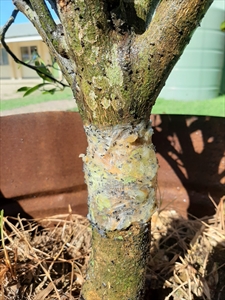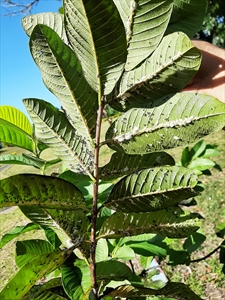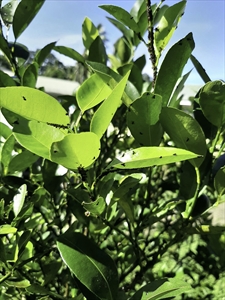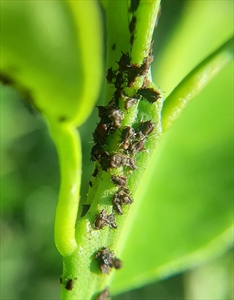- Chillies are grown world-wide. There are many varieties and they differ in ‘hotness’.
- Active ingredient is Capsaicin. The common varieties have a range of ‘hotness’ [measured in Scoville heat units (SHU)], e.g.:
- Habanero (Red Savina) = 350,000 to 750,000 SHU.
- Habanero (Fiji Bongo Chili) = 100,000 to 350,000 SHU
- Nepalese Akabare = 100,000 to 350,000 SHU
- Bird’s Eye = 50,000 to 100,000 SHU.
- Formulation guide:
- Bird’s Eye – 20g/L fresh weight (about 30 ripe fruits)
- Bongo chili/Akabare – 10g/L fresh weight (about 5 ripe fruits)
- Red Savina – 5g/L fresh weight (about 3 ripe fruits).
- Must use personal protection equipment (PPE) when preparing the chillies and spraying:
- Collect mature to ripe fruits of selected chili variety.
- Crush and pound the chilies, working them into a paste.
- Place the paste on a fine muslin cloth and bring the sides together making a cloth bag enclosing the paste. Place the cloth bag in a bucket adding sufficient water to cover the bag for at least 1 hour, preferably overnight.
- After soaking, squeeze the juice from the bag with hands protected by rubber gloves or plastic bags.
- For each 1L water of the final mix, add 10ml (1 bottle cap) cooking oil and 5g (1/2 bottle cap) bar soap (preferably vegetable Castile soap).
- Check to see if the mix contains plant material which might block the sprayer. If it does, strain through fine muslin or a metal strainer.
- Add water to achieve final volume; pour into the sprayer, and use.
- Adapt formulation to 10L or 15L mixture to fit hydraulic knapsack sprayer.
- Used to control aphids on a range of vegetable crops, thrips on eggplant, and to disrupt the symbiotic relationship between ants (e.g., white-footed ant), aphid and scale insects, particularly Icerya seychellarum.
Pacific Pests, Pathogens and Weeds - Online edition
Pacific Pests, Pathogens, Weeds & Pesticides
Chilli pesticide (preparation & use) (504)
Chilli. It is also known as chilli pepper, cayenne pepper, and pimento in Portuguese.
Capsicum frutescens; there are many other species that produce 'chillies', e.g., Capsicum annuum, Capsicum baccatum, Capsicum chinense, and Capsicum pubescens. They are all members of the nightshade family, the Solanaceae.
AUTHOUR: Mani Mua & Grahame Jackson
Information from Pacific Organic Standard. SPC Land Resources Division, Suva, Fiji. (https://lrd.spc.int/pacific-organic-standards); and Scoville heat scale. Wikipedia. (https://en.wikipedia.org/wiki/Scoville_scale). and from Maskey B, et al. (2021) Post-harvest quality of fresh Akabare chili (Capsicum chinese) as affected by hydrocooling, package modification and storage temperature. International Journal of Food Properties. (https://www.tandfonline.com/doi/pdf/10.1080/10942912.2020.1865399).
Produced with support from the Australian Centre for International Agricultural Research under project HORT/2016/185: Responding to emerging pest and disease threats to horticulture in the Pacific islands, implemented by the University of Queensland and the Secretariat of the Pacific Community.










